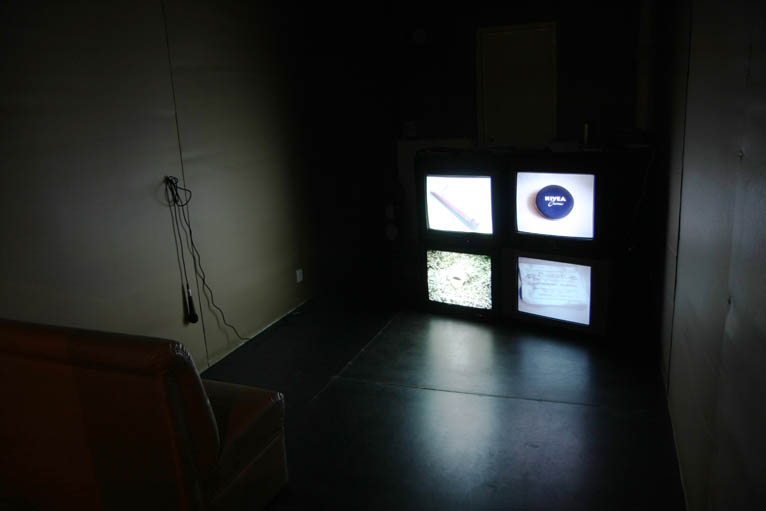LEE KIT: SOMEONE SINGING AND CALLING YOUR NAME
| February 1, 2010 | Post In LEAP 1

By introducing itself as a “significant shift” in Lee Kit’s practice, this show asks us to note that the works on display are completely different in form from any previous works. But this makes me wonder what exactly the central theme running through Lee’s creations might be. His painted cloth is aimed at breaking free from “art,” and in abandoning its object, it achieves a pure sense of “passage” stripped of time, its meaning entrusted to this passage itself. This also comes out in Lee’s video work of repetitive smoking and working. If upon viewing his videos you find yourself wondering “what does this have to do with me?,” then the desired effect has been achieved. Lee is pointing to how individual experience seeps into ordinary objects with the passage of time.
All the language devoted to Lee’s supposed new interest in social anxiety and consumerism feels besides the point. Perhaps Lee does wish to say that consumer goods are vehicles for experience, but I prefer to think that in Lee’s work, society and consumption are governed by human experience. The pieces must undergo a repetitive and monotonous process of creation, or require more time than one might imagine to be experienced, so that experience pours into the artwork, allowing it to express its pure face.
To talk about this show we must first consider how the two groups of work on display are connected to each other. The first group consists of four monitors, their screens showing products like tubes of Vaseline and tins of Nivea cream as scrolling subtitles, listing their names like in a karaoke video. This reminded a friend of Magritte’s Ceci n’est pas une pipe—a useful take, as it raises the possibility that the work ponders the names of things and their essence while also keeping with the show’s title, “Calling Your Name.” To some extent, this group of work leads into the next.
The second group of work consists of a straight-up karaoke room in which anonymous scenes are projected as in a bootleg karaoke video. While these have a 15mm look, they were not shot with film. The actual production process is quite convoluted: Lee captures low-resolution footage with his camera, plays it on a computer and shoots the computer screen again. These recordings amplify the effect of the old love songs they are played with, making these songs more sentimental, more melancholy, wallowing in deeper loss. But this feeling of heaviness also raises questions: for example, why do decade-old love songs make us sad?
Perhaps the answer is in the songs’ vagueness. Whether we witness a cloth painted stroke by stroke, the breakfast rotating in the microwave every day, the scenes fortuitously glimpsed from the window of a moving car, or a room viewed through drowsy eyes, the object (the artwork) is not the only vehicle for experience, but also music, landscape and environment. Vagueness gives our most personal feelings a public face.
The above is an attempt to use logic to decipher the relationship between the two groups of work in the show as well as the show’s basic direction. But this is only one of many possible readings, and may well be irrelevant. These videos about experience and feeling are constantly out of focus, their centers always shifting, never fixed. The vagueness I just spoke of, on the other hand is “not unique, not special,” and Lee is probably only pretending to be dealing with formal problems in art. Lee is really seeking to convey something else, and even though we, as an audience, cannot know for sure what it is (nor do we need to know these “real” details), we find wonderful resonance between what Lee conveys and our own stories, just as we become emotional upon listening to an old love song. If we cannot find this resonance, no amount of analysis can help us understand this artist’s work. Anthony Yung


